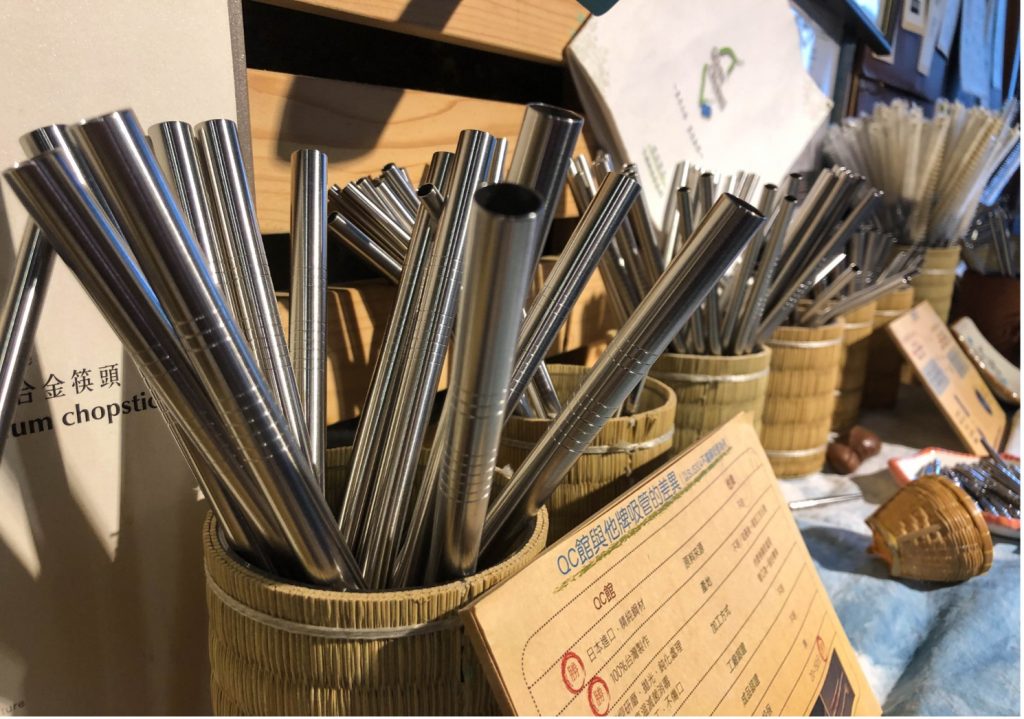
Bboba nai cha (Bubble Tea)
No tea story will be complete without writing about bubble tea.
Originally, bubble tea was an iced tea drink that contained a particular ingredient, tapioca pearls, at the bottom of the drink. Today, this bubble tea drink is not always served as iced tea; it can have fruity notes and real fruit as ingredients. This tea or fruit infusion tea today has many varieties and flavours. This trendy tea drink, wildly popular in Taiwan and, in fact, all over Asia, was traditionally made with tapioca pearls and iced tea, hence the name bubble tea. Bubble tea goes by many names, the most popular, Bboba tea, pearl tea or boba nai cha.
The name bubble tea comes from the tapioca bubbles or pearls at the bottom of the drink and the way this delicious milk tea beverage is prepared. The vigorous shaking of the milk in the preparation process also leaves bubbles and foam at the top of the tea drink. Hence the name, bubble tea.
The origin of bubble tea
There are many disputed origins of this trendy Taiwanese beverage. The most famous story is that Bboba nai cha originated in Taichung. However, the story goes that Liu Han Chie of the renowned Chun Shui Tang Teahouse claims that he invented this drink in the 80s. Whilst travelling in Japan, Chie was inspired by Japanese iced beverages. So, when he arrived back home, he experimented with cold milk tea by adding various fruit, sweeteners and tapioca pearls.
The rest, they say, is history. This trendy ice drink’s popularity spread worldwide, and you can find this delicious, refreshing ice tea or iced fruit drink with tapioca pearls in coffee shops and juice bars in most countries.
Apart from this tea drink traditionally served in a transparent plastic “glass” so that the consumer can see the tapioca pearls, it is served with a noticeably thicker and fatter, more colourful straw. This is so that you can slurp up the tapioca pearls and chew these as your drink your sweet iced tea. These pearls are chewy and soft jelly balls. They glide up the straw as you drink your tea.
These fat straws are also causing a big stir in Taiwan; this is reported in the media; the whole bubble tea tradition is being challenged by the Taiwan Government’s crackdown on plastic.
The best bubble tea in Taiwan
I searched for the best bubble tea in Taiwan and landed at Chun Shui Tang, the teashop famous for inventing bubble tea. I visited their most highly recommended teashop in Xinyi District, Taipei City. This famous shopping district is also home to Taipei 101. A landmark building with 101 floors that was once the world’s tallest skyscraper.
When I visited the shop in Taipei, I had to wait for about 25 minutes to have a seat. When I looked at the English Chinese Menu patrons get, the first line and item on the menu read, “The Creator of Pearl Milk Tea”. There was a tiny bubble tea symbol, two different sizes and “iced” or “hot drink” next to this menu item. Even though I wasn’t in the original shop in Taichung, a city more south, I realized that I was about to taste one of the most famous tea drinks on our tiny blue planet, made the way it was traditionally made in the 80s.
The menu looked appetizing, too; apart from the variety of tea drinks, like Sesame Milk Tea, Jasmine Milk Tea, and Pearl Jasmine Tea, something else caught this wannabe tea connoisseur’s eyes. Oolong Beancurd with Bonito Flakes. In short, Tofu and tea. My two favourite tastes combined. Heaven.
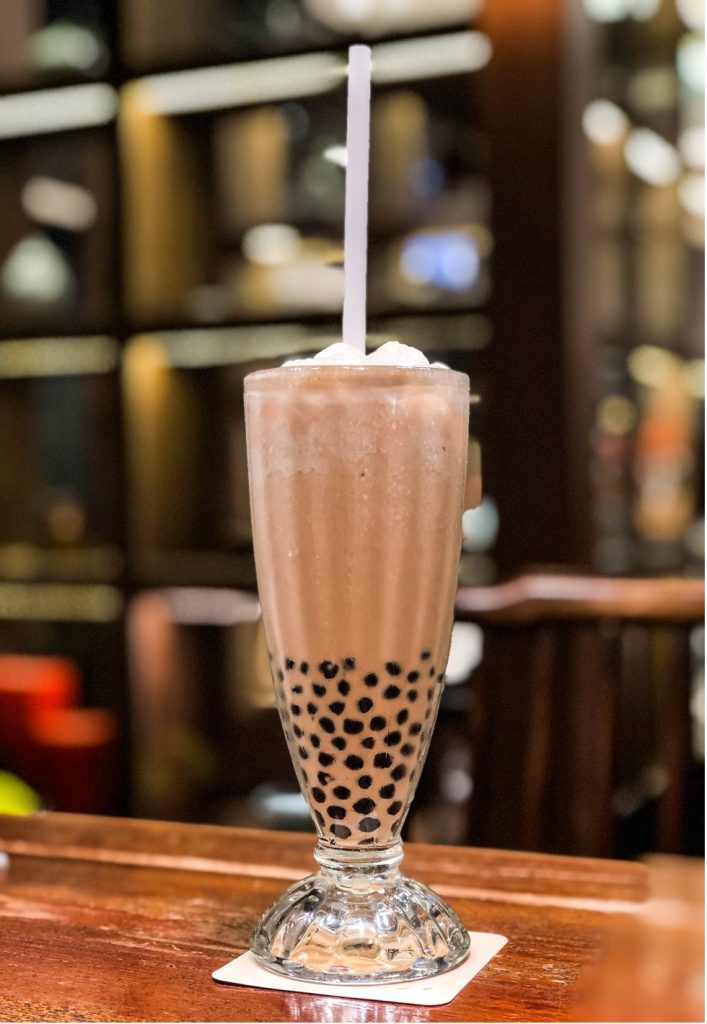
The fat straw used with bubble tea
I had many varieties of bubble tea during my four years living in Taiwan. Back in 2002, when I visited for the first time, and now, I also enjoyed the more modern, trendy versions of this milky tea beverage. On visits to the street stalls and night markets, I noticed how much plastic gets used for packaging food.
When I go to a regular bubble tea shop, I will get the tea in a plastic “glass”, usually thin and see-through, and there would be a plastic top lid with the now infamous but much-beloved fat straw.
Aware of the waste I produce everyday after a documentary I shot on plastic pollution with TEIA (Taiwan Environmental Information Association). I am, as a result, consciously reducing my plastic consumption, limiting the harm I cause to the environment.
Environmental campaigns
The government of Taiwan also acknowledged the calls from so many environmental campaigns regarding plastic pollution and marine debris. Consequently, the government is taking a very firm stance on plastic.
EPA’s restrictions on plastic straws were introduced in June last year. A notice was posted on the EPA’s website, an excerpt from the Environmental Policy Monthly, dated June 2016.
According to the notice, the EPA has drafted restrictions on single-use plastic straws due to the growing urgency to address marine plastic pollution. The draft stipulates that the following four businesses will be prohibited from providing single-use straws for customers dining in-store: public sector entities, public and private schools, department stores, and shopping malls. This ban will affect 8,000 businesses.
Taiwan’s beloved sweet milky tapioca pearl drinks will be affected by this ban. Since this notice, the internet has ignited protests, and the debate continues. The main question is, “how will we drink bubble tea without a straw?”
Since the announcement of the EPA’s preannounced restriction on plastic straws, the milk tea industry and all lovers of the famous Bboba nai cha, or bubble tea, are discussing it. The conversation on the ban reached all street corners of Taiwan and all the tiny street alleys of all villages and cities.
A bubble tea frenzy
In the press over the past couple of months, various stories have been reported on this bubble tea frenzy online. According to many reports, the Taiwanese can’t imagine not having their favourite drink without a straw.
Plastic straws are single-use plastic items that are not recycled. As a result, these plastic utensils are one of the most harmful trash pieces in our oceans.
“After plastic straws are used, they are discarded in the environment where they break down into small plastic pieces or are ingested by animals. According to the EPA website, the ingested plastic can absorb toxins in the environment and then accumulate and be consumed by animals higher up in the food chain.”
“However, the EPA urges businesses to take early action by not providing plastic straws unless customers request them. The public is also encouraged to prepare their reusable straws to reduce plastic pollution and waste of resources.”
Marine waste cleanup statistics
Taiwan Environmental Information Organization (TEIA) released its 2017 Marine Waste Clean-up (International Coastal Cleanup) statistics earlier. The data presented reflected those straws were among the top three marine debris found by various marine waste monitoring organisations. The total number of straws found in monitored areas where 23,113. Monitoring operations are done in small square blocks on beaches and do not span the entire monitored coast. This proves again that there is a growing problem with plastic, specifically straws ending up as marine debris on the beaches of Taiwan.

According to the data collected in the 2017 Marine Waste Clean-up, the Top 5 marine debris:
- Plastic bottles – 49,305 pieces
- Plastic caps – 32,347 pieces
- Straws – 23,113 pieces
- Glass bottles – 17,321 pieces
- Plastic bags – 16,436 pieces
Alternatives to plastic straws used in bubble tea
Quan Chang Co. in Taipei is an environmentally conscious company that has offered an alternative to plastic straws. Instead, the company manufactures eco-friendly stainless steel straws.
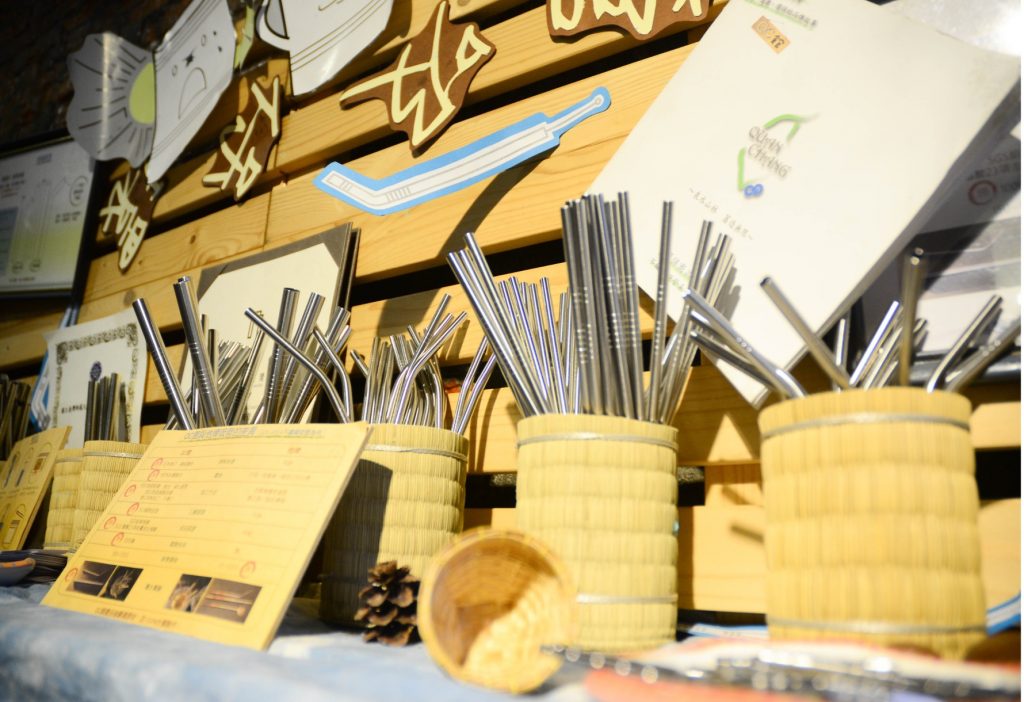
I visited the shop in Taipei to learn more about these eco-products and buy some of their products that came highly recommended as alternatives to the straws that would be banned in June/ July 2019.
“I made a bunch of straws. They are going back to America, “says Ocean Chang, owner of Quan Chang.
As it is known, QC is a Taiwanese brand that cares for the environment and our health, and a handout of the products is proclaimed. “In fact, for the health of the people, for the health of the environment,” answers Chang to the question of the company’s vision.
On this handout, neatly illustrated and explained are examples of 19 straws. Then, in extensive, bold letters, “ARE YOU STILL USING TOXIC STRAWS?”
“It is a straightforward idea. It is to be good to oneself, be good to others and the environment, and do a kind thing simultaneously,” he said.
A green shop in Taipei
The whole shop is “green”. I scan the shop again as we speak. I look at the tiny GongFu tea set neatly arranged in the middle of the heavy wooden table. I am seated on a big wooden stump, balancing myself in the middle of the rings of the chopped tree. Everything smells like earth. There is soft Buddhist chanting playing in the background. We drink honey water from see-through recycled glasses with yellow rims, and I had my first experience with a glass straw. We eat fruit out of wooden bowls with stainless steel utensils, and we drink more tea as we exchange ideas, him not speaking any English and me with my 200 words Chinese vocabulary. We communicate with the assistance of a translation device.
“Some people will change and buy these alternatives, but the others will probably still use the public straw, says Ocean’s wife, Nancy Chen.
“People are upset because they don’t want to make this change; it is seen as an “inconvenience.”
“It is difficult to change people’s habits,” Ocean adds, “But this is a product of environmental protection that can change people’s habits. Then we need more people to be green to spread the word and educate people,” he said with passion.
Ocean is sitting across from me, speaking Chinese into this small translation device. I have never seen anything like this, and I am rather impressed at how we manage to communicate, me speaking into this tiny little machine in English and my words immediately translated into Chinese. Ocean listens with attention to my questions and answers again in Chinese.
“Plastic straws are toxic. So people need to buy alternative options like stainless steel. Habits that are focused on environmental protection are needed.”
Green straws
“But how do you get people to choose green straws,” he asked. “We must continue to create these kinds of green products, products that are good for the environment.”
Three people enter through the door. Our conversation is cut short. They are welcomed like family.
The lady close to me starts a conversation in perfect English.
“We came here, especially for the straws. I work in the environmental administration department with this idea or policy to ban plastic straws. It is challenging, as the Taiwanese love bubble tea. The problem is that the policy did not introduce a replacement for the straws. Instead, one official saying we can eat with spoons, “said Jeanne Wei, Environmental Protection Administration System Analyst, Department of Environmental Monitoring and Information Management.
Department of Waste Management specialist Lee Yi-Hua said, “people could use a spoon instead of a straw” these words have caused a massive outlash by netizens and the public alike. This is also now the topic in the shop.
Wei was visiting QC with family members, and all of them were making investments for the environment. Her brother Charlie bought a couple of straws to take back to the US.
“In Taiwan, drinking bubble tea is a cultural tradition. So people are not happy about the straws ban,” affirmed Wei.
From the ongoing debates, it is clear that public opinion is against the ban on straws.
There is a lot of waste on the beaches, and as the data of environmental efforts have shown, many straws are found as marine debris. So the problem is shown in the data, the beaches, and the trash bags collected.
“The proposal was disapproved by many people”, according to Wei, “it is a difficult situation to implement this ban.”
Recycling in Taiwan
Taiwan is currently nr 3 in the world in recycling; a country is a well-oiled machine for reducing, reusing and recycling. “The global ban for using plastic bags, Taiwan was very early to implement that. We did pretty well. When I went to New York, I realized that our plastic bags are thicker than those used in the west. I know that people in the west use a lot of plastic bags, with no restraints, but in Taiwan, we have to pay to use them; this helps people be more conscious about using plastic bags; I think this is a good thing “Wei said.
On banning plastic straws, she said it depends on education too. “If we can teach children, it can help. We have to start from the young; this year, I also heard stories about how young people influenced their parents to vote in the referendums.” According to Wei, banning straws is a new idea. “We need to educate children on the uses of plastic and other options to take care of the environment. This is a very new thing; people need to be educated.”
Jeanne and her family left after discussing plastic pollution, environmental protection and tea. Ocean cut more fruit, and we drink more tea.
Investing in eco products
“Every country has environmental groups. We must be united to be strong. This “green” straw is very durable and of good quality. You will save a lot on buying and paying for plastic straws. In the end, this will also help the environment. This is much better for your health too.
But the quality has to be good for it to have this value. So if the quality is not good, then it is not a good product and utensil, “he continues.
According to Chang, many people out there are willing to invest in good quality utensils that are eco products; these straws are good quality and good for the environment.
“Environmental education and education about these Eco eating utensils are critical if we want to protect our environment for the next generation,” says Chang. He looks over at his daughter sitting in his wife’s lap.
I noticed a tear running down his cheek, and he sniffed and wiped his nose. At that moment, I realize that I am speaking to a very passionate man about his work with the environment and that he is speaking into this small translating device with his whole heart.
I saw his heart, and I felt his concern in his expression and words.
“Plastic cause a lot of environmental problems”, he said with a heavy heart.
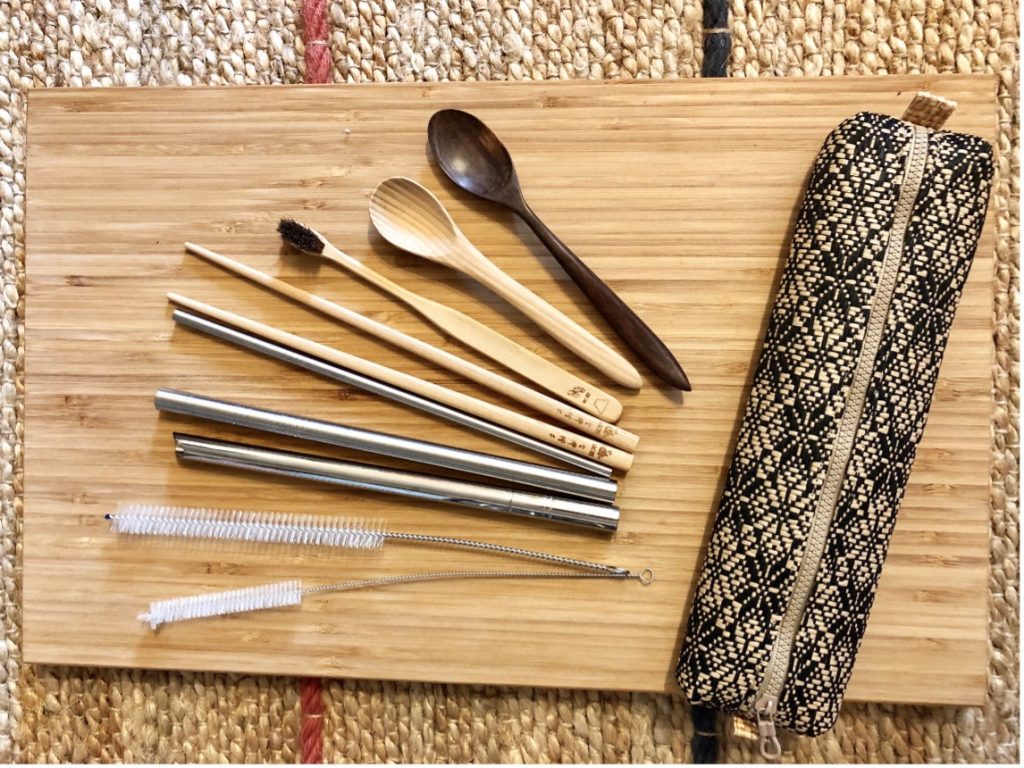
Enjoyed the journey with words and exploring with me? Share, tweet, or email the story!
Photographs and text by
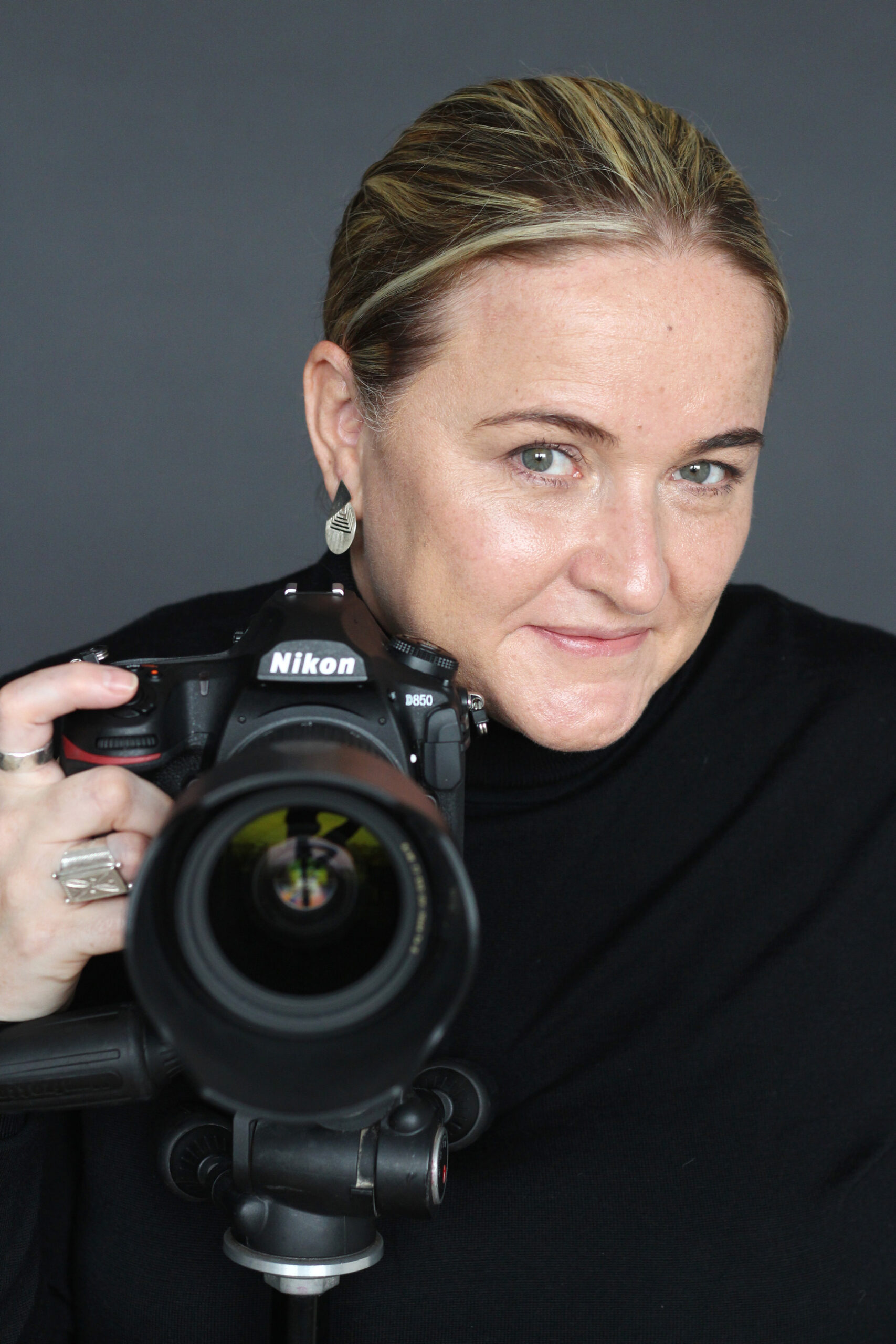
Lizane Louw
As a travel & culture journalist, Lizane research, write and share original travel and culture-related stories. Lizane produces high-quality content for various platforms, including print, online, social media, and video platforms. Lizane enjoys writing feature articles, sharing experiential stories, and creating photo essays of all the offbeat, remote and interesting destinations she visits.
